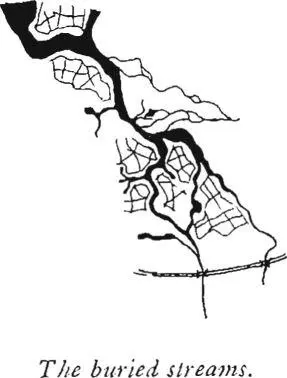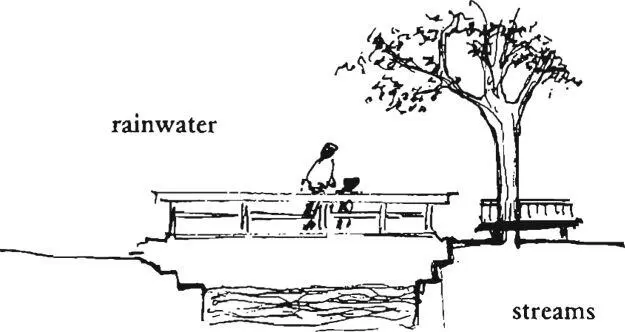Christopher alexander - A pattern language
Здесь есть возможность читать онлайн «Christopher alexander - A pattern language» весь текст электронной книги совершенно бесплатно (целиком полную версию без сокращений). В некоторых случаях можно слушать аудио, скачать через торрент в формате fb2 и присутствует краткое содержание. Жанр: Прочая научная литература, на английском языке. Описание произведения, (предисловие) а так же отзывы посетителей доступны на портале библиотеки ЛибКат.
- Название:A pattern language
- Автор:
- Жанр:
- Год:неизвестен
- ISBN:нет данных
- Рейтинг книги:3 / 5. Голосов: 1
-
Избранное:Добавить в избранное
- Отзывы:
-
Ваша оценка:
- 60
- 1
- 2
- 3
- 4
- 5
A pattern language: краткое содержание, описание и аннотация
Предлагаем к чтению аннотацию, описание, краткое содержание или предисловие (зависит от того, что написал сам автор книги «A pattern language»). Если вы не нашли необходимую информацию о книге — напишите в комментариях, мы постараемся отыскать её.
A pattern language — читать онлайн бесплатно полную книгу (весь текст) целиком
Ниже представлен текст книги, разбитый по страницам. Система сохранения места последней прочитанной страницы, позволяет с удобством читать онлайн бесплатно книгу «A pattern language», без необходимости каждый раз заново искать на чём Вы остановились. Поставьте закладку, и сможете в любой момент перейти на страницу, на которой закончили чтение.
Интервал:
Закладка:
XXXVII
Natural streams in their original streambeds, together with their surrounding vegetation, can be preserved and maintained. Rainwater can be allowed to assemble from rooftops into small pools and to run through channels along garden paths and public pedestrian paths, where it can be seen and enjoyed. Fountains can be built in public places. And in those cities where streams have been buried, it may even be possible to unravel them again.

In summary, we propose that every building project, at every scale, take stock of the distribution of water and the access to water in its neighborhood. Where there is a gap, where nourishing contact with water is missing, then each project should make some attempt, on its own and in combination with other projects, to bring some water into the environment. There is no other way to build up an adequate texture of water in cities: we need pools for swimming, ornamental and natural pools, streams of rain water, fountains, falls, natural brooks and streams running through towns, tiny garden pools, and reservoirs we can get to and appreciate.
Therefore:
Preserve natural pools and streams and allow them to run through the city; make paths for people to walk along them and footbridges to cross them. Let the streams form natural barriers in the city, with traffic crossing them only infrequently on bridges.
326 64 POOLS AND STREAMS
Whenever possible, collect rainwater in open gutters and allow it to flow above ground, along pedestrian paths and in front of houses. In places without natural running water, create fountains in the streets.

♦£*
If at all possible, make all the pools and swimming holes part of the running water—not separate—since this is the only way that pools are able to keep alive and clean without the paraphernalia of pumps and chlorine— still water(71). Sometimes, here and there, give the place immediately around the water the atmosphere of contemplation; perhaps with arcades, perhaps some special common land, perhaps one end of a promenade— promenade(3 I ), HOLY GROUND(66) , ARCADES (I 19) . . . .
65 BIRTH PLACES
. . . both birth and death need recognition throughout society, where people are, as part of local communities and neighborhoods- COMMUNITY OF 7OOO (l2), IDENTIFIABLE NEIGHBOR
HOOD(14), life cycle(26). As far as birth is concerned, each group of neighborhoods must be able to take care of the birth process, in local, human terms. (Note: The development of this pattern is due largely to the work of Judith Shaw, at this writing a graduate student in architecture at the University of California, Berkeley, and a mother of three children.)
*♦* *4*
It seems unlikely that any process which treats childbirth as a sickness could possibly be a healthy part of a healthy society.
“Pregnancy is no state of emergency from which the mother may hopefully be returned to ‘normality’ after the birth of the child. . . . It is a highly active, potent, developmental process of the family going forward to its natural culmination in delivery.” (I. H. Pearse and L. H. Crocker, The Peokhain Experiment, New Haven: Yale University Press, 1946, p. 153.)
The existing obstetrics service in most hospitals follows a well outlined procedure. Having a baby is thought of as an illness and the stay in the hospital as recuperation. Women who are about to deliver are treated as “patients” about to undergo surgery. They are sterilized. Their genitals are scrubbed and shaved. They are gowned in white, and put on a table to be moved back and forth between the various parts of the hospital. Women in labor are put in cubicles to pass the time with virtually no social contact. This time can last for many hours. It is a time when father and children could be present to provide encouragement. But this is not permitted. Delivery usually takes place in a “delivery room” which has the proper “table” for childbirth.
6 s birth places
Except for the particular workings of the delivery table the room has the same properties as an operating theater. The birth becomes a time for separation rather than togetherness. It may be as long as 12 hours before the mother is even allowed to touch her baby, and if she was sedated for the delivery, even longer before she may see her husband.
For about fifteen years there has been a subtle movement to try and recapture the essence of childbirth as a natural phenomenon. There has been no loud protest against obstetricians and hospital rules, but a rather quiet one: several good books, word of mouth, concerned professionals and nonprofessionals, the La Leche League, a few groups around the country whose prime concern is with birth, and the re-emergence of the nurse-midwife. The original effort of these people was aimed at “natural” childbirth, the name being applied in an attempt to bring the concept of childbirth back to a normal physiological occurrence. Lately the focus of the effort has been expanded to include an altered environment for childbirth and to include the family in a positive way. (For an architectural slant, see Lewis Mumford, The Urban Prospect, New York: Harcourt Brace and World, 1968, p. 25.)
We quote now from Judith Shaw’s description of a good birth place. She is describing a place comparable to a small nursing home, perhaps associated with a local health center, and with emergency connections to the local hospital:
A small basket for the baby would be provided. . . . The nurse-midwife would be there always to provide post-partum care. . . . The nurse-midwife, who lives in, would have a small suite containing a bedroom, sitting room-kitchen and bath. . . .
The eating place would be communal. Each baby would have a place too (his movable basket) so that the mother can bring her child with her to feed or to watch. . . . The pattern farmhouse kitchen(139) could play an important role in this building.
. . . families can come not only to have babies but have their prenatal care, learn methods of natural childbirth, possibly child care, maybe just to talk and in general to become familiar with the place they will come to for the delivery.
The birthing place should have accommodations for the entire family. They can occupy a suite in which they live and in which the mother gives birth to the baby. . . . Since the delivery would take place in the family suite, the baby, mother, and the family can be
together immediately. Each suite would have to be equipped with running water and a simple table on which to lay the baby, wash it and give it its initial examination.
Therefore:
Build local birth places where women go to have their children: places that are specially tailored to childbirth as a natural, eventful moment—where the entire family comes for prenatal care and education; where fathers and midwives help during the hours of labor and birth.
| family event |
|---|
 |
♦J# 4^4
Читать дальшеИнтервал:
Закладка:
Похожие книги на «A pattern language»
Представляем Вашему вниманию похожие книги на «A pattern language» списком для выбора. Мы отобрали схожую по названию и смыслу литературу в надежде предоставить читателям больше вариантов отыскать новые, интересные, ещё непрочитанные произведения.
Обсуждение, отзывы о книге «A pattern language» и просто собственные мнения читателей. Оставьте ваши комментарии, напишите, что Вы думаете о произведении, его смысле или главных героях. Укажите что конкретно понравилось, а что нет, и почему Вы так считаете.












